Common Problems with Manual Gearboxes
- Drivers often face issues with gears not shifting smoothly, causing hesitation or failure to engage, especially when shifting into higher gears.
- Grinding, clunking, or whining sounds during gear changes can indicate worn synchronizers, damaged gear teeth, or low transmission fluid levels.
- Leaks from the gearbox or transmission pan can lead to insufficient lubrication, causing overheating and premature wear of internal components.
1.1. Difficulty Engaging Gears
Difficulty engaging gears is a common issue in manual gearboxes, often caused by improper clutch usage or misaligned shift linkage. Worn synchronizers can also lead to gears not engaging smoothly, especially when shifting into higher gears. Additionally, driver error, such as not fully depressing the clutch or mismatching RPMs, exacerbates the problem.
1.2. Noises While Shifting
Manual gearboxes often produce noises like grinding, clunking, or whining during shifting. These sounds can indicate worn bearings, damaged gear teeth, or misaligned components. Low transmission fluid levels may also cause abnormal noises due to insufficient lubrication, leading to premature wear of internal parts and potential gearbox failure.
1.3. Transmission Fluid Leaks
Transmission fluid leaks are a common issue, often caused by worn seals, gaskets, or damaged gearbox components. Low fluid levels can lead to insufficient lubrication, causing overheating and accelerated wear. Regular inspection of the transmission pan and seals is crucial to prevent leaks and ensure smooth gearbox operation.
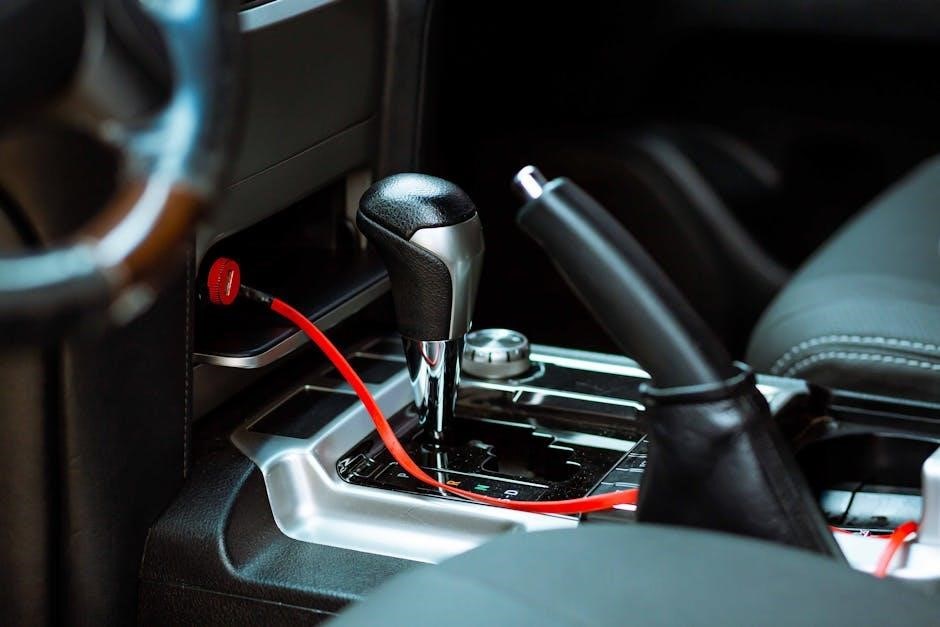
Causes of Manual Gearbox Issues
- Prolonged use leads to worn gears, bearings, and synchronizers, causing poor engagement and noise.
- Aggressive or incorrect shifting can damage gear teeth and stress the gearbox, leading to premature failure.
- Insufficient fluid reduces lubrication, causing overheating and wear on internal components, which can result in costly repairs.
2.1. Wear and Tear of Components
Prolonged use of a manual gearbox leads to wear on gears, bearings, and synchronizers. Over time, these components become worn, causing poor gear engagement and noise during shifting. This wear can result in difficulty shifting gears smoothly and may eventually lead to component failure if not addressed.
2.2. Improper Shifting Techniques
Improper shifting, such as riding the clutch or sudden acceleration, can lead to premature wear on gearbox components. Aggressive shifting habits cause unnecessary stress on gears and bearings, reducing the lifespan of the transmission and potentially leading to costly repairs.
2.3. Low Transmission Fluid Levels
Low transmission fluid levels can cause gears to grind or slip, leading to poor engagement and increased wear on components. Insufficient lubrication may result in overheating, which can damage the gearbox and necessitate expensive repairs if not addressed promptly.

Diagnosing Manual Gearbox Problems
Diagnosing issues involves checking the gear shift mechanism, inspecting transmission fluid condition, and listening for unusual noises. Early detection helps prevent major repairs and ensures smooth operation.
3.1. Checking the Gear Shift Mechanism
Inspect the gear shift for looseness or play, which can indicate worn linkage components. Ensure all gears engage smoothly without hesitation or grinding. Lubricate moving parts if necessary to maintain proper function and prevent wear.
3.2. Inspecting Transmission Fluid Condition
Check the transmission fluid level using the dipstick, ensuring it’s within the recommended range. Examine the fluid’s color and consistency—it should be light amber and smooth. Dark or gritty fluid indicates contamination or wear, requiring immediate attention to prevent gearbox damage.
3.3. Listening for Unusual Noises
Unusual noises like grinding, clunking, or whining during gear shifts can indicate worn gears, damaged bearings, or improper alignment. Pay attention to when the noise occurs—during acceleration, deceleration, or while stationary. Persistent noises often signal underlying issues that require prompt inspection to prevent further gearbox damage.
Maintenance Tips for Manual Transmissions
- Ensure optimal lubrication by replacing transmission fluid periodically to prevent wear and tear on internal components.
- Keep the clutch pedal fully released to avoid unnecessary strain on the clutch and gearbox.
- Use smooth, deliberate shifts to reduce stress on gears and extend the gearbox’s lifespan.
4.1. Regular Transmission Fluid Changes
Regular transmission fluid changes are crucial for maintaining manual gearbox health. Replace fluid every 30,000 to 60,000 miles to prevent wear, reduce overheating risk, and avoid contamination. Clean fluid ensures smooth gear engagement and extends component lifespan.
- Prevents internal component wear
- Reduces risk of overheating
- Keeps gear engagement smooth
4.2. Avoiding Riding the Clutch
Riding the clutch, or keeping it partially pressed, can cause excessive wear on the clutch and gearbox; This leads to increased heat and premature wear on components like the throwout bearing and pressure plate.
- Fully release the clutch pedal when not shifting gears
- Avoid prolonged use of the clutch in heavy traffic
- Practice smooth, deliberate shifts to minimize clutch engagement time
4.3. Smooth Shifting Practices
Smooth shifting involves pressing the clutch fully, using the accelerator gently, and transitioning between gears without jerking. This prevents wear on the gearbox and ensures efficient power delivery.
- Match RPMs to the gear you’re shifting into
- Avoid sudden acceleration or harsh shifts
- Use gradual, controlled movements when engaging gears
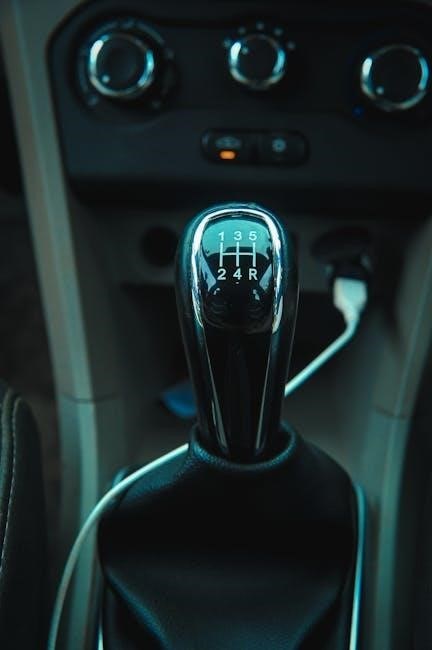
Repair Options for Manual Gearboxes
Repair options include replacing worn components, refurbishing the gearbox, or performing a complete replacement. The choice depends on the extent of damage and budget constraints.
5.1. Replacing Worn-Out Parts
Replacing worn-out parts such as bearings, synchros, and gear teeth can address specific issues without overhauling the entire gearbox. This cost-effective solution is ideal for localized damage, ensuring smooth shifting and preventing further deterioration of the transmission system.
5.2. Refurbishing the Gearbox
Refurbishing the gearbox involves cleaning, inspecting, and replacing damaged or worn components while reusing viable parts. This method is cost-effective, extending the gearbox’s lifespan and improving performance, often addressing issues like leaks or noisy operation without requiring a full replacement.
5.3. Complete Gearbox Replacement
When damage is extensive, a complete gearbox replacement is necessary. This involves removing the old unit and installing a new or rebuilt one. It’s a costly option but ensures optimal performance. Replacement is often required if internal components are severely damaged or worn beyond repair, preventing further operation.
Cost Estimates for Manual Gearbox Repairs
Manual gearbox repairs can range from $300 for minor fixes to $2,000+ for extensive overhauls. Costs vary based on parts, labor, and damage severity.
6.1. Average Repair Costs
Average manual gearbox repair costs range from $300 to $1,500, depending on the issue. Replacing worn parts like synchronizers or bearings typically costs $500-$800, while more complex overhauls can exceed $1,500. Labor costs often account for 50-70% of the total expense, varying by location and mechanic expertise.
6.2. Factors Influencing Repair Expenses
- Extent of damage to gears, bearings, or synchronizers significantly impacts costs.
- Availability and price of replacement parts, especially for older or specialty models.
- Labor rates vary by location, with specialists often charging more than general mechanics.
6.3. DIY Repair Considerations
- DIY repairs can save costs but require mechanical aptitude and tools.
- Minor fixes like fluid changes or gasket replacements are manageable.
- Complex issues, such as gear replacements, often demand professional expertise.
- Online guides and forums provide valuable resources.
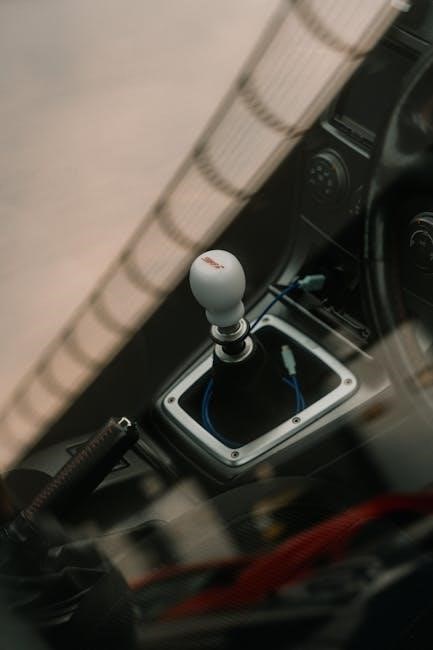
Comparing Manual and Automatic Transmissions
- Manual transmissions offer better fuel efficiency and driver control but require more skill and effort.
- Automatic transmissions provide ease of use and convenience, especially in heavy traffic.
- Manuals generally have lower maintenance costs, while automatics may be more expensive to repair.
7.1. Reliability and Maintenance
- Manual transmissions are often more reliable due to their simpler design compared to automatics.
- Regular maintenance, such as transmission fluid changes, is crucial for longevity.
- Improper driving techniques can lead to premature wear on manual gearbox components.
- Automatics may require more complex repairs, increasing maintenance costs.
7.2. Driver Preference and Control
- Manual transmissions offer drivers more control over gear shifts, enhancing driving engagement and precision.
- Many prefer manuals for the tactile experience and better fuel efficiency they provide.
- Automatics, while convenient, may lack the direct connection to the vehicle’s performance.
7.3. Fuel Efficiency Differences
- Manual transmissions generally offer better fuel efficiency compared to automatics due to their mechanical simplicity and direct driver control.
- Smooth shifting and proper clutch usage can further enhance mileage, making manuals a preferred choice for cost-conscious drivers.
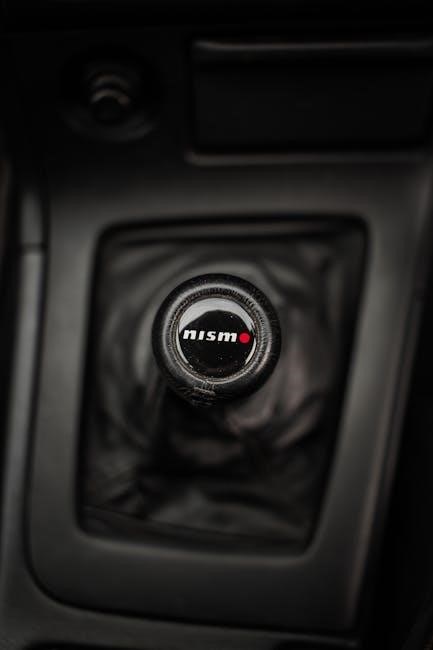
Driving Techniques to Prevent Gearbox Problems
- Use smooth, deliberate shifts to avoid stressing gearbox components.
- Avoid sudden acceleration or aggressive driving to reduce wear.
- Coasting in neutral can prevent unnecessary gear strain.
8.1. Proper Clutch Usage
Proper clutch usage is essential for maintaining manual gearbox health. Avoid riding the clutch, as it causes unnecessary wear on the clutch and gearbox components. Press the clutch fully when shifting and release it smoothly to prevent jerky transitions. Proper technique reduces wear and extends gearbox lifespan. Smooth, deliberate actions are key.
8.2. Avoiding Sudden Acceleration
Sudden acceleration places unnecessary stress on the manual gearbox, leading to premature wear on gears and synchronizers. Aggressive driving can cause clutch and transmission components to degrade faster. Smooth, gradual acceleration is key to maintaining gearbox health and ensuring long-term reliability. Avoid abrupt throttle inputs to protect your transmission.
8.3. Coasting in Neutral
Coasting in neutral disengages the engine from the transmission, leading to poor engine braking and increased wear on internal components. This practice can also result in reduced control, especially when driving downhill, requiring more frequent braking. Additionally, it may reduce fuel efficiency and affect overall driving efficiency.
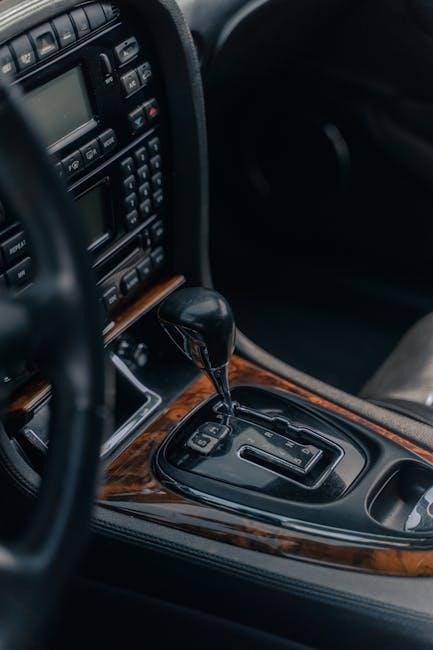
Signs of a Failing Manual Gearbox
- Unusual noises during gear shifts indicate worn components like gears or bearings.
- If gears are hard to engage or slip out, it signals potential issues with the clutch or synchronizers.
- Leaks around the gearbox or transmission pan point to damaged seals or gaskets.
9.1. Grinding or Clunking Sounds
Grinding or clunking noises during gear shifts often indicate worn or damaged components, such as synchronizers, gear teeth, or bearings. These sounds may also result from improper clutch engagement or low transmission fluid levels, requiring immediate inspection to prevent further damage.
9.2. Difficulty Shifting Gears
Difficulty shifting gears can stem from worn components like the clutch or synchronizers, or insufficient transmission fluid levels. This may cause gears to slip or fail to engage properly, leading to poor vehicle control and potential mechanical failure if left unaddressed.
9.3. Visible Fluid Leaks
Visible fluid leaks from the manual gearbox indicate worn seals or gaskets, often caused by wear and tear or excessive heat. If left unaddressed, leaks can lead to insufficient lubrication, causing internal components to overheat and potentially fail, requiring costly repairs or even gearbox replacement.
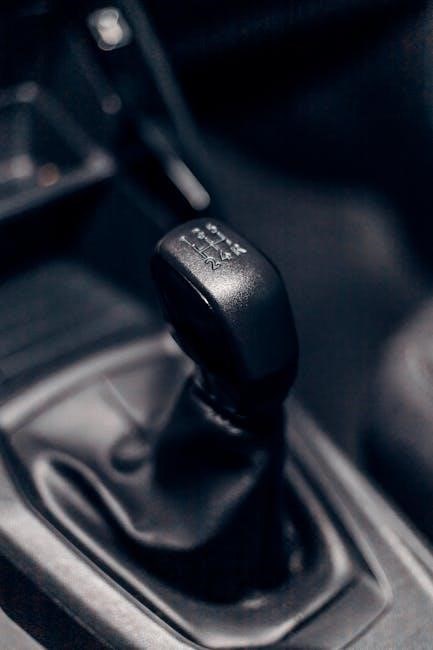
When to Seek Professional Help
Persistent noises, gear slippage, or a noticeable performance decline indicate the need for professional assistance. Addressing these issues promptly can prevent further damage and costly repairs.
10.1. Persistent Noises or Vibrations
Continuous clunking, grinding, or humming sounds during gear shifts signal potential internal damage. Vibrations while driving may indicate misaligned or worn components. Ignoring these signs can lead to costly repairs if not addressed promptly by a professional mechanic;
10.2. Gear Slippage or Failure to Engage
Gear slippage occurs when gears fail to engage properly, causing the car to lose power or acceleration. This issue often stems from worn clutch facings, low transmission fluid levels, or damaged shift linkages. If gears consistently fail to engage, it may indicate internal gearbox damage requiring immediate professional attention.
10.3. Noticeable Performance Decline
A noticeable decline in performance may manifest as hesitation, refusal to engage gears, or delayed acceleration. This can result from low transmission fluid levels, internal component wear, or clutch issues. Addressing these problems promptly is crucial to prevent further damage and ensure optimal gearbox functionality.
Regular maintenance is key to preventing manual gearbox issues. Addressing problems early ensures reliability and cost-effectiveness. The future of manual transmissions remains bright for driving enthusiasts.
11.1. Importance of Regular Maintenance
Regular maintenance is crucial for extending the lifespan of a manual gearbox. Checking transmission fluid levels, avoiding clutch riding, and ensuring smooth shifting practices can prevent wear and tear. Addressing issues early reduces repair costs and ensures optimal performance, making maintenance a cost-effective solution for longevity.
11.2. Cost-Effective Solutions
Addressing manual gearbox issues early offers cost-effective solutions. Replacing worn parts and refilling transmission fluid can prevent major repairs. Regular maintenance and proper driving techniques reduce wear, saving money in the long run and avoiding costly overhauls or complete gearbox replacements.
11.3. Future of Manual Transmissions
While automatic transmissions are gaining popularity, manual gearboxes remain a niche choice for driving enthusiasts. Their simplicity and lower maintenance needs make them cost-effective. Regular servicing and proper driving techniques ensure longevity, keeping manual transmissions relevant in modern automotive trends.

